10 Astounding Facts About the Great Pyramid Of Giza
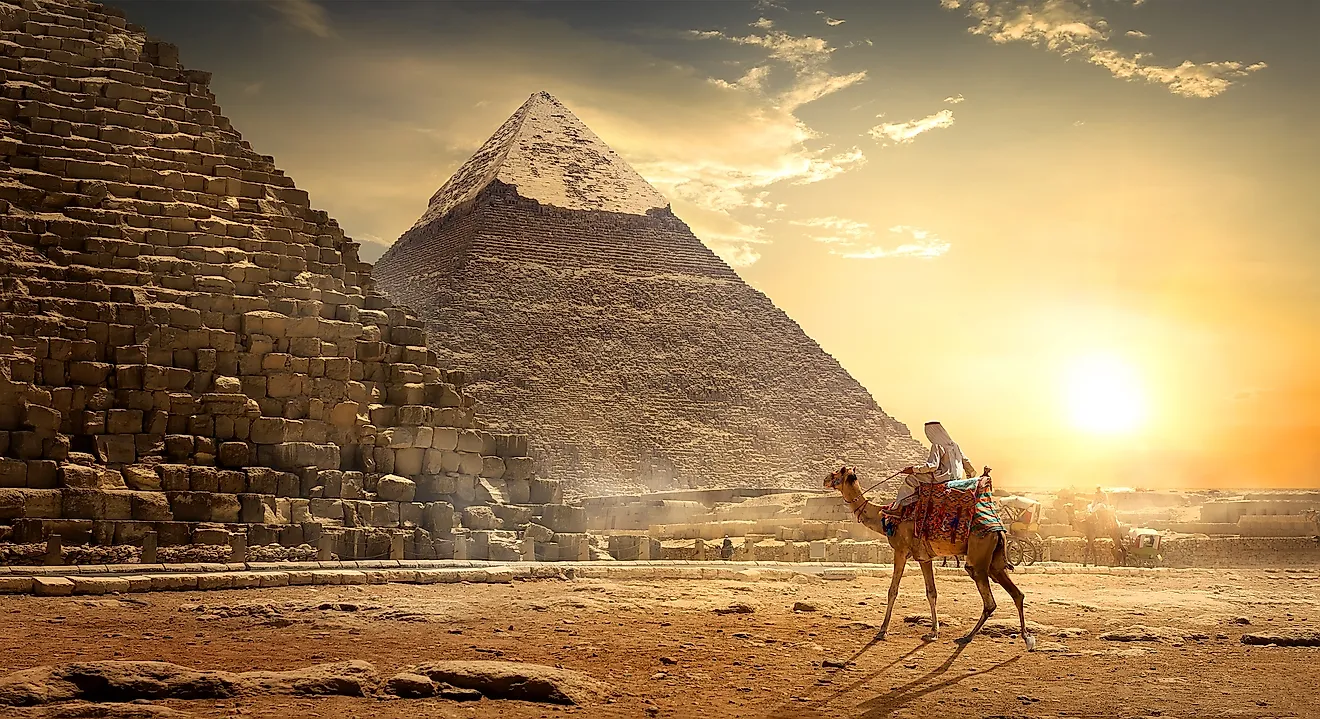
- The Great Pyramid is the oldest and tallest of the three Pyramids of Giza.
- There is considerable debate about many aspects of the Pyramid, from how it was constructed and how many laborers were needed, to the purpose of the structure.
- It is the only one of the Seven Ancient Wonders of the World to still be in existence today.
The Great Pyramid is a defining symbol and landmark in Egypt. It is the oldest and largest pyramid in the Giza pyramid complex located in the Giza Plateau near Cairo. The other two pyramids are the Pyramid of Khafre and the Pyramid of Menkaure. Although the Great Pyramid has been excavated and studied for years, the purpose of its construction is still a subject of debate. Below are some of the facts about this human-made wonder in Egypt.
The Pyramids of Giza were one of the Seven Ancient Wonders of the World. They are now considered an honorary candidate of the New Seven Wonders, which were announced in 2007.
1. It was constructed during the reign of King Khufu
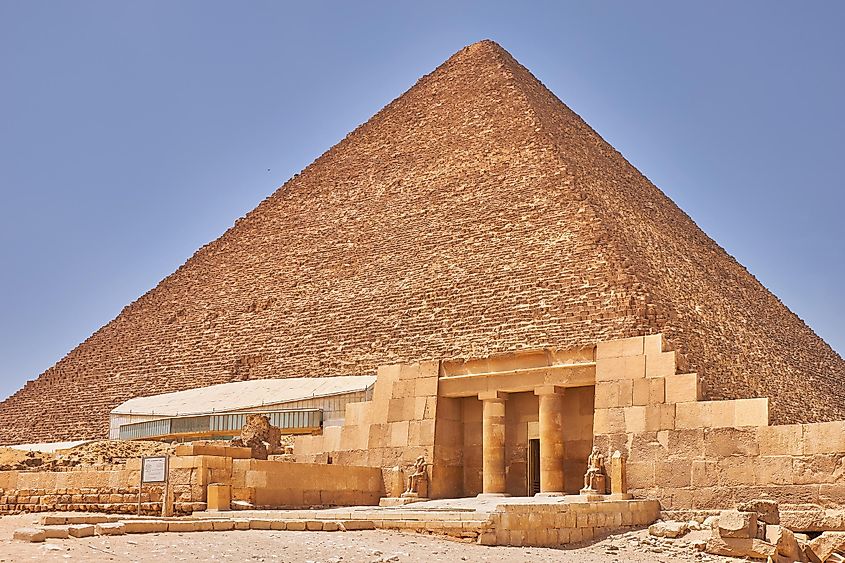
The pyramid was constructed during the reign of King Khufu (2589-2566 BCE). He was the second king of the fourth dynasty of Egyptian kings. Shortly after coming to power, it is believed that Khufu set out to build his grand tomb in which he would be buried, which lives on today as the Great Pyramid. He also constructed other pyramids for his queens nearby.
The pyramid is an impressive sight, but it would have been even more so after it was first finished. The stones we now see exposed would have been covered with smooth casing stones, giving the structure the shape of a true pyramid with flat sides.
2. The other two pyramids are for Khufu’s son and grandson
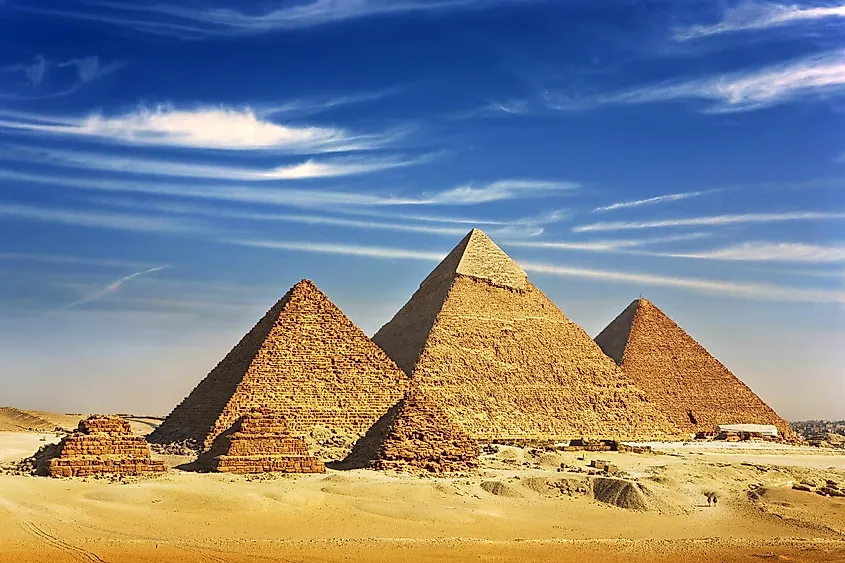
The Great Pyramid is just one of the three major pyramids in Giza. The second-oldest one is the Pyramid of Khafre which was built as a tomb for Khafre, Khufu’s son. It is the second-tallest pyramid in Giza. Khafre ascended to the throne after the short-lived reign of Redjedef, who was likely his older brother and was Khufu’s successor. He reigned from approximately 2558 to 2532 BCE, but the exact timeline has never been established.
The third and the smallest pyramid is the Pyramid of Menkaure, Khafre’s son. It is not totally clear, but he most likely succeeded his father as king and reigned for 18 or 28 years. It was unfinished at his death, but his successor Shepseskaf had the mortuary temple finished. Important sculptures were found in the tomb.
3. It was built over 20 years
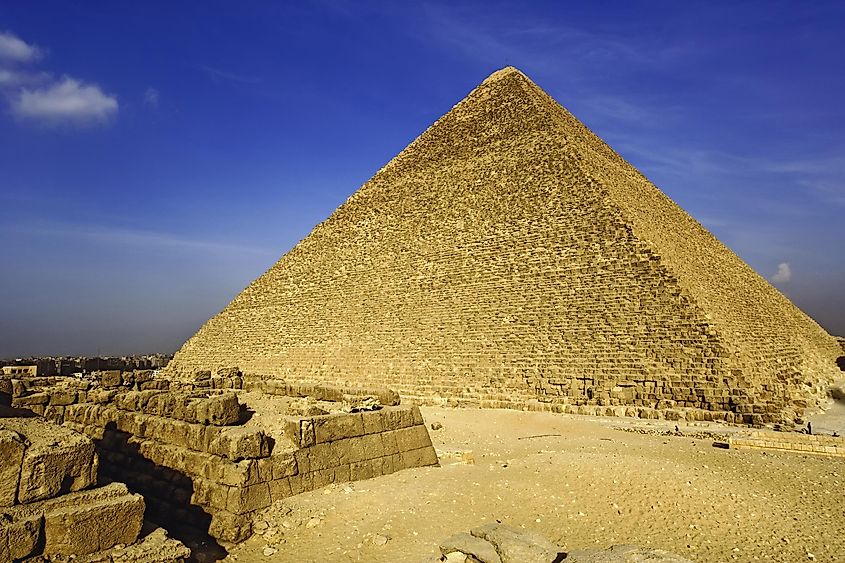
It took about 20 years for the Great Pyramid to be completed. The Greek historian Herodotus posited that the work required 100,000 laborers who were divided into five clans of 20,000 men each. However, recent evidence shows that the work required a workforce of 14,500-40,000 men. There is considerable debate about how the pyramids were constructed and whether the laborers were slaves or skilled workers, as well as how many of them were needed for construction. One thing that appears to have been settled in recent years is the fact that the laborers were most likely paid, skilled workers.
4. It may have been for a different purpose other than a tomb
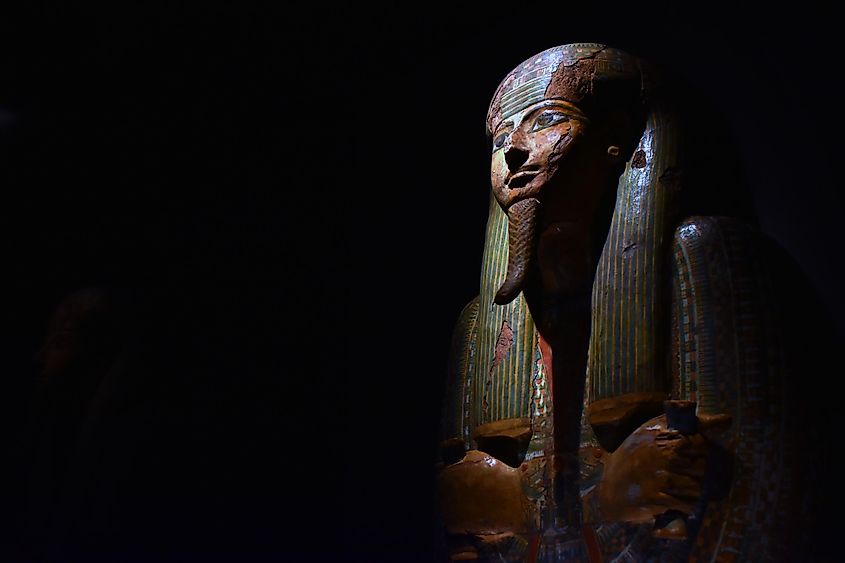
Although it is widely believed that this landmark was constructed as the final resting place for the king after death, some scholars argue that it was not a tomb as no mummies or graves have ever been found there. Studies are still ongoing to determine the exact use of the pyramid.
5. It was the tallest human-made structure for 3,800 years
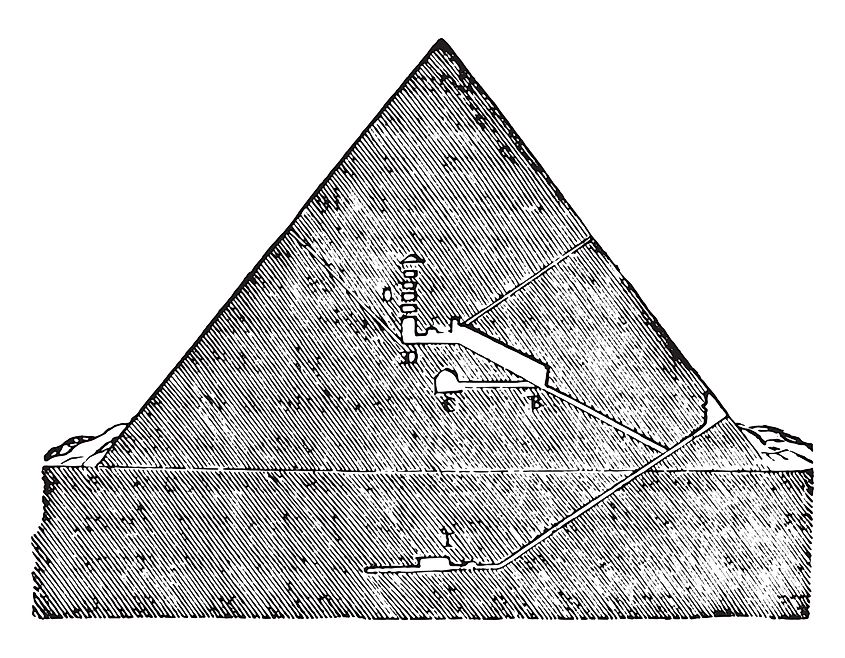
The pyramid was the tallest structure made by humans for a record 3,800 years until the completion of the Lincoln Cathedral (England) in 1300 CE, which is 520 feet tall (160 m). The pyramid is 479 feet (146 m) tall and has a base of 754 feet (230 m) on each side. However, other scholars point to Eiffel Tower completed in 1889 as the structure that first surpassed the pyramid, measuring in at 1,063 feet (324 m).
6. The Pyramid is surrounded by several other structures
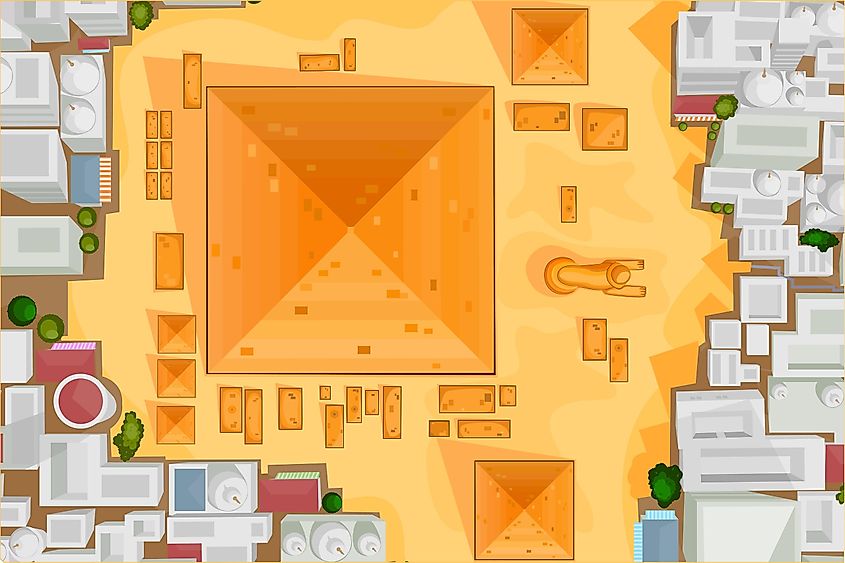
The pyramid is surrounded by several structures, including smaller pyramids. The tomb of Khufu’s mother, Queen Hetepheres is also nearby. The pyramid is also surrounded by mastabas where the king’s officials and relatives were buried to accompany and support the king in the afterlife. Three smaller pyramids for Khufu’s wives were built next to the Great Pyramid.
7. Over 2 million stone blocks were used in the construction
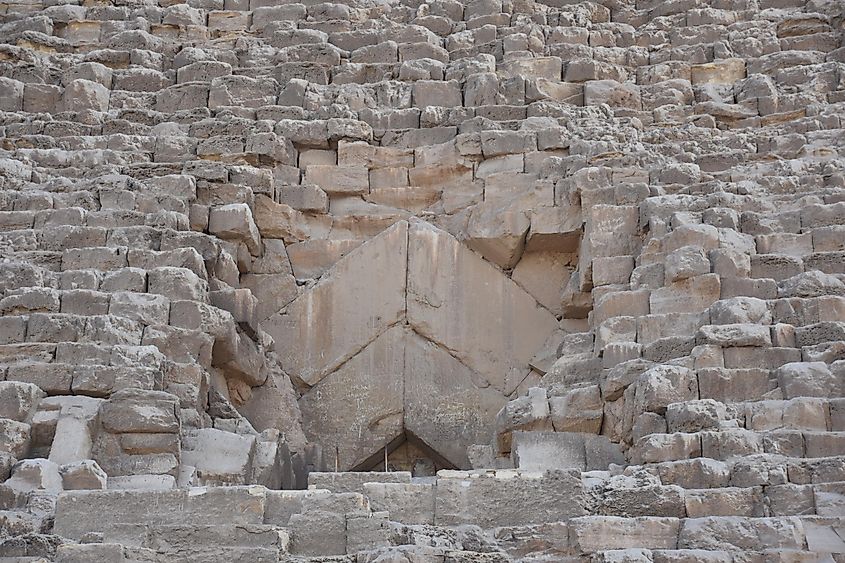
The Egyptian monument comprises up to 2.5 million blocks of stones, some of which are massive, especially the pink granite in the King’s Chamber, a room near the top of the pyramid that houses a red granite sarcophagus. The stones for this chamber weighed between 25 and 80 tonnes and were brought roughly 500 miles (800 km) to the site of the pyramids. Estimates for the quantity of materials used are 5 million tonnes of limestone and 8,000 tonnes of granite.
The method used to transport and place the blocks is yet another source of debate among experts. The stones were most likely dragged across the sand and lifted using a rope system, or pushed on ramps that were lubricated with water to prevent friction. To bring the stones to the site of construction, they were carried by boats on the Nile and possibly pushed across the desert with a machine invented for this purpose.
8. Sir William Flinders Petrie was the first person to excavate the pyramid
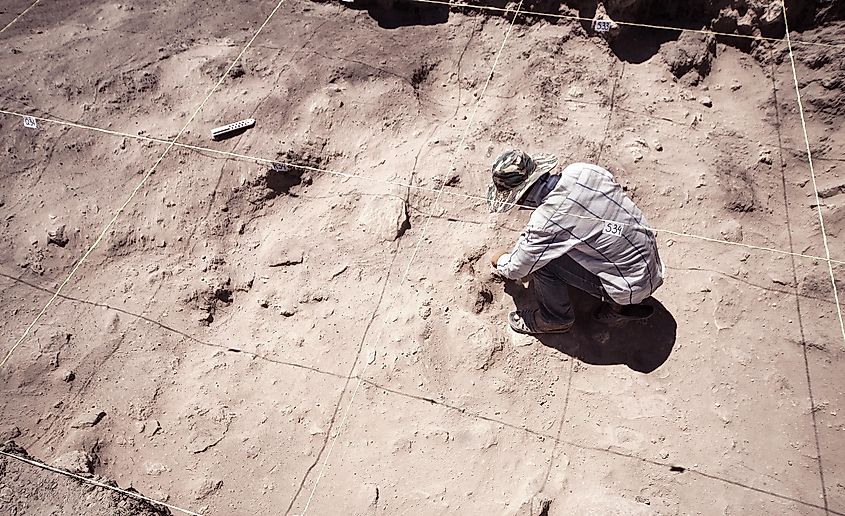
Sir William Mathew Flinders Petrie was the first person to use modern techniques and scientific analysis to excavate the pyramid. The British archaeologist first excavated the pyramid in 1880, setting the standard for archaeological operations in Egypt, particularly Giza. He created a sequence-dating method that has since been used to help reconstruct history from ancient remains like the pyramid. He was knighted in 1923 for his work on Egypt, which spanned half a century of his life.
9. The Great Pyramid has three known chambers
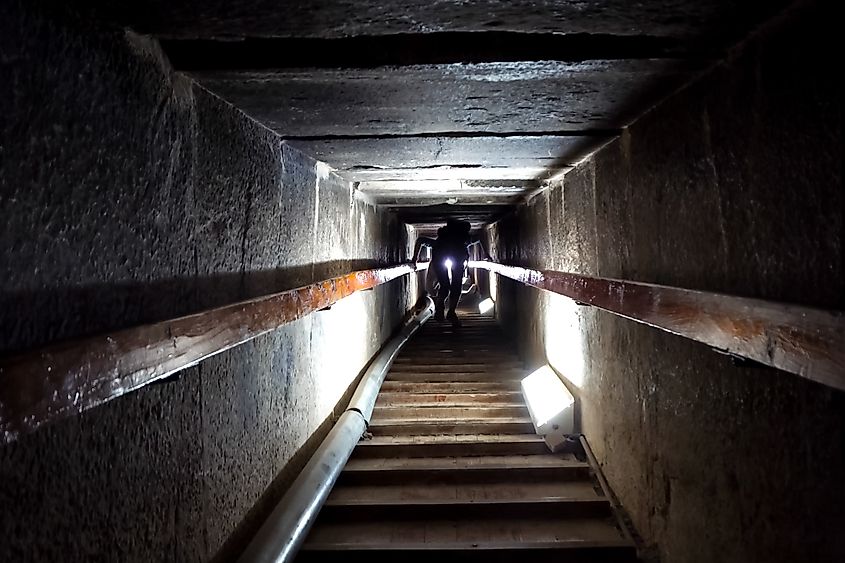
The pyramid has three known chambers, as well as a high-ceilinged hallway: the Grand Gallery, the Queen’s Chamber, the King’s Chamber and an unfinished subterranean chamber. The unfinished chamber was cut into bedrock, while the King’s and Queen’s chambers are higher up within the structure. Joining the two is the Grand Gallery, and all the rooms have airshafts, but, as is common with anything related to the Pyramids of Giza, experts debate whether these tunnels were in fact for air circulation, or rather for ritualistic purposes relating to the ascension of the king’s spirit to the heavens.
Experts agree that the Queen’s Chamber was not actually intended to be a burial site for the queen, despite the name of the chamber. Some curious objects were found in the chamber, the only objects found in the entire pyramid: a granite sphere and a copper hook. Because of this, some experts believe this chamber was meant to house Khufu’s funerary objects.
When Petrie excavated the pyramid, the only object found in the King’s Chamber was the red granite sarcophagus, which was empty and damaged at one corner. It was also hastily finished and less ornate which was unusual for a king’s sarcophagus at that time, so experts believe that the original sarcophagus was broken or lost and this one was quickly made to replace it. Because the sarcophagus is slightly larger than the hallway leading to the chamber, it is known that it was placed there during the construction of the pyramid before the chamber’s ceiling was added.
10. The Pyramid was looted
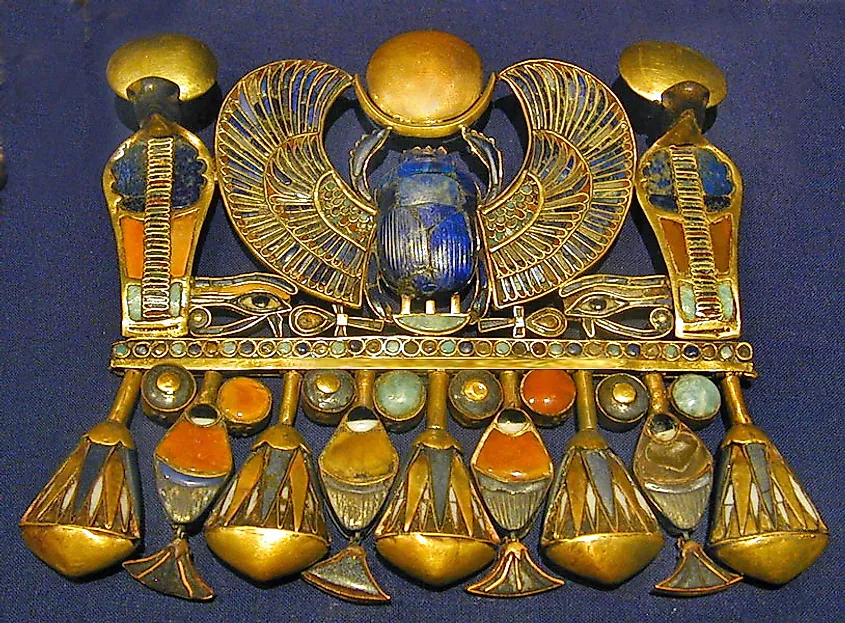
The Great Pyramid was looted long before Petrie’s arrival to the scene. In fact, looting was commonplace in Ancient Egypt, out of revenge, during economic hardship, or by the deceased’s own relatives. Kings were considered to be an incarnation of the god Horus, and so the descendants of dead kings perceived the objects of the tombs as their own, and so did not think twice about recovering them.











